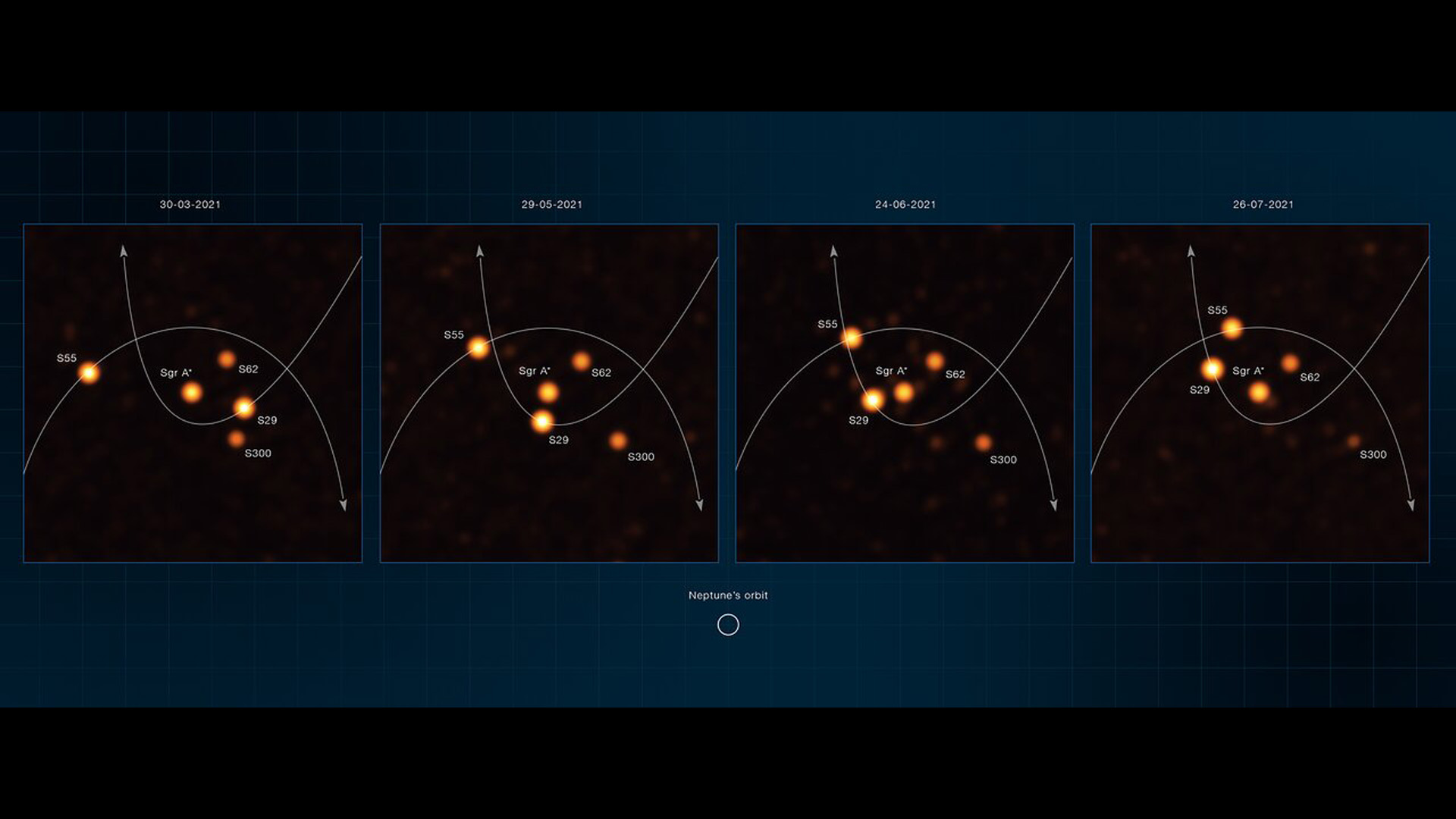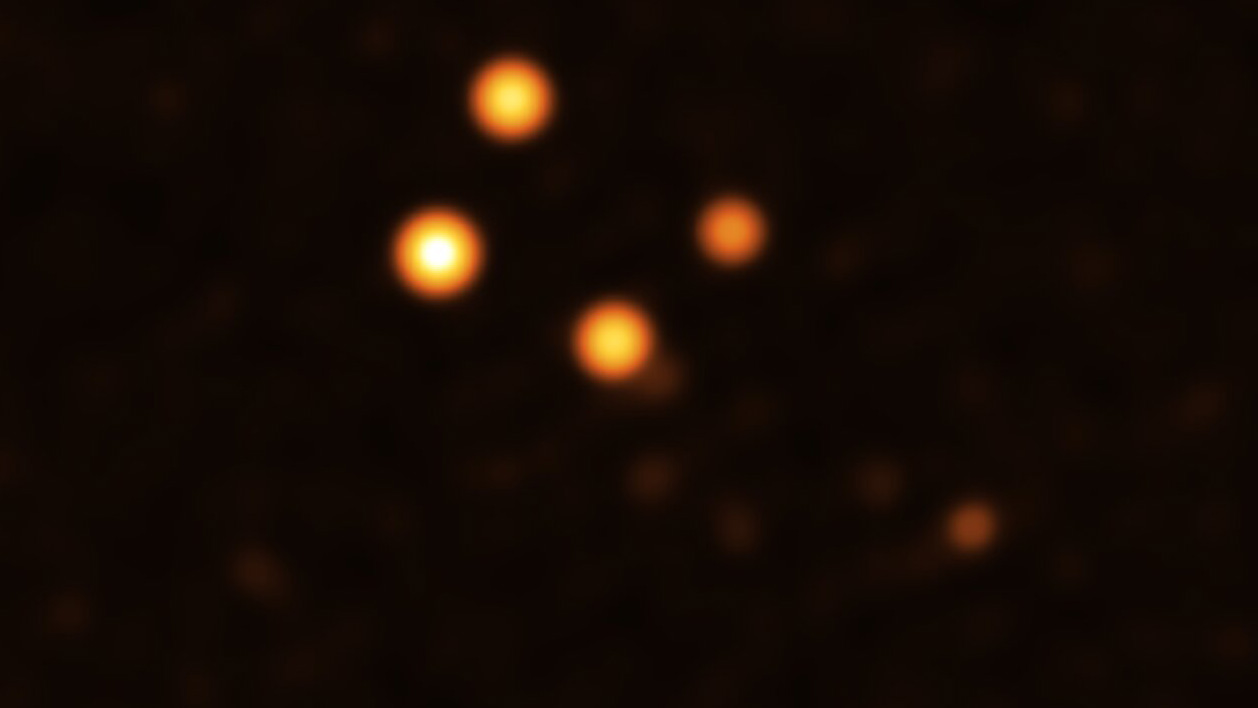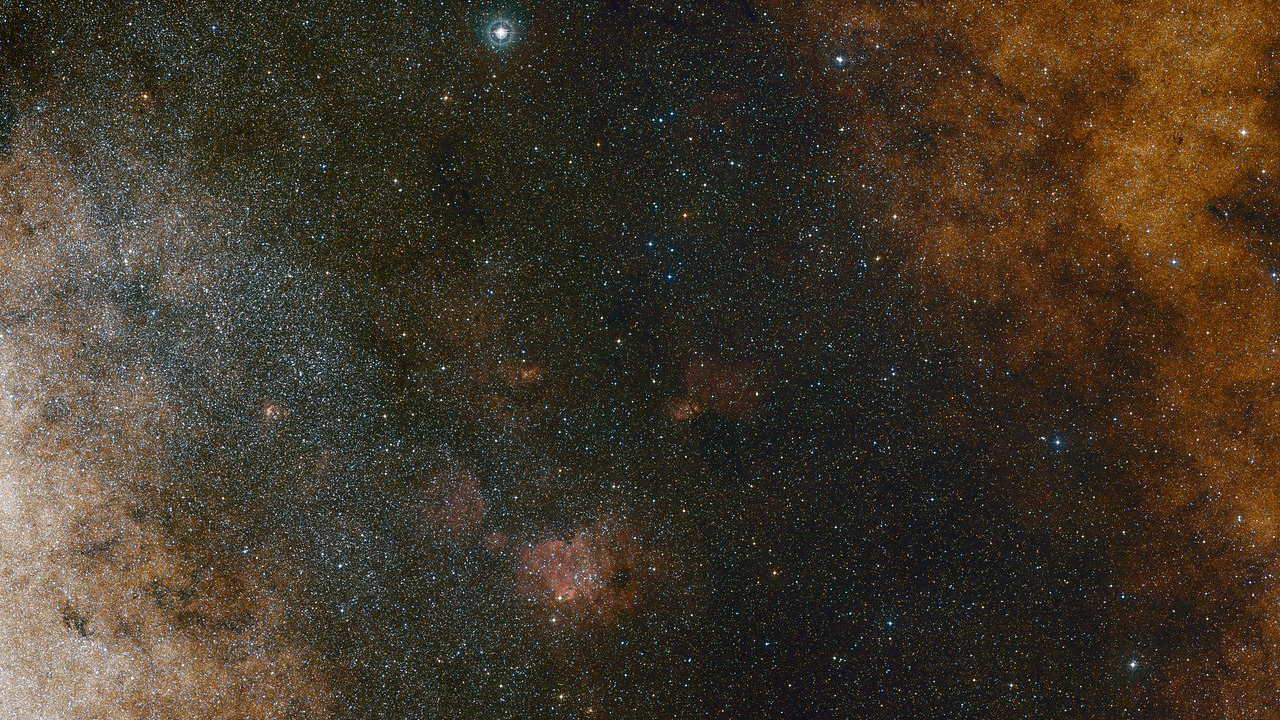Astronomers peer deeper into Milky Way's heart than ever before with new telescope images
They're the deepest, sharpest images yet of the Milky Way's core, where a giant black hole lurks.

Astronomers have captured the deepest and sharpest images of the Milky Way's center ever, enabling scientists to estimate the mass of the giant black hole at our galaxy's heart with unmatched precision.
The Milky Way observations, made with the Very Large Telescope Interferometer (VLTI) at the European Southern Observatory (ESO) in Chile, also revealed a previously unknown star orbiting close to our galaxy's mysterious central black hole, called Sagittarius A*.
The Very Large Telescope is one of the world's most advanced optical space observatories. Consisting of four main telescopes, each 27 feet in diameter (8.2 meters), and four auxiliary telescopes, 6 feet in diameter (1.8 m), the observatory can detect stellar objects four billion times fainter than what can be seen with the naked eye.
A technique called interferometry enables astronomers to combine the light coming through the four main telescopes into a single image. Astronomers have been using interferometry for years, but its latest iteration provides a jaw-dropping 20-fold improvement in sharpness and detail compared to the images obtained by the individual telescopes, researchers said.
Related: Milky Way's galactic core overflows with colorful threads in new panorama
"The VLTI gives us this incredible spatial resolution and with the new images we reach deeper than ever before," Julia Stadler, a postdoctoral researcher at the Max Planck Institute for Astrophysics in Garching, Germany, who led the imaging campaign, said in a statement. "We are stunned by their amount of detail, and by the action and number of stars they reveal around the black hole."
Since the black hole in the Milky Way's center emits no light, it cannot be directly observed. Astronomers can only learn about its properties by studying the motions of the stars in its vicinity.
Get the Space.com Newsletter
Breaking space news, the latest updates on rocket launches, skywatching events and more!
"Following stars on close orbits around Sagittarius A* allows us to precisely probe the gravitational field around the closest massive black hole to Earth, to test general relativity, and to determine the properties of the black hole," Reinhard Genzel, the director of the Max Planck Institute for Extraterrestrial Physics and recipient of the Nobel Prize in Physics 2020 for his decades-long research of Sagittarius A*, said in the statement. Genzel is also a co-author of the new study.



The measurements, conducted between March and July 2021, revealed that Sagittarius A* has a mass of 4.3 million suns and sits at a distance of 27,000 light-years from Earth. Both of these figures are the most precise estimates of their kind to date.
During the campaign, the astronomers observed the star S29, the closest known star to Sagittarius A*, zooming by the black hole at a distance of just 8 billion miles (13 billion kilometers). That is only about 90 times the distance from Earth to the sun. During this close pass, the star travelled at a record-breaking speed of 5,430 miles per second (8,740 kilometers per second).
But the observations also discovered a completely new star in this dense region close to the galaxy's heart. Named S300, the star's discovery is a promising development for further research into this intriguing part of the galactic system.
The research is part of an international project called GRAVITY, which is developing new techniques for analyzing images of the Milky Way's galactic center with the goal of mapping the surroundings of Sagittarius A* in the greatest possible detail. The astronomers hope that in the future, they will be able to detect stars much fainter than S29 and S300 and orbiting even closer to the black hole. The orbits of these close stars may reveal information about the black hole's rotation. The astronomers hope to make major leaps after the completion of ESO's Extremely Large Telescope, which will become the world's largest optical space observatory when it comes online in about 2025.
"With GRAVITY and the ELT's powers combined, we will be able to find out how fast the black hole spins," Frank Eisenhauer, an astronomer at MPE and principal investigator of the GRAVITY project, said in the statement. "Nobody has been able to do that so far."
The new research is described in two papers published in the journal Astronomy & Astrophysics on Tuesday (Dec. 14).
Follow Tereza Pultarova on Twitter @TerezaPultarova. Follow us on Twitter @Spacedotcom and on Facebook.
Join our Space Forums to keep talking space on the latest missions, night sky and more! And if you have a news tip, correction or comment, let us know at: community@space.com.

Tereza is a London-based science and technology journalist, aspiring fiction writer and amateur gymnast. Originally from Prague, the Czech Republic, she spent the first seven years of her career working as a reporter, script-writer and presenter for various TV programmes of the Czech Public Service Television. She later took a career break to pursue further education and added a Master's in Science from the International Space University, France, to her Bachelor's in Journalism and Master's in Cultural Anthropology from Prague's Charles University. She worked as a reporter at the Engineering and Technology magazine, freelanced for a range of publications including Live Science, Space.com, Professional Engineering, Via Satellite and Space News and served as a maternity cover science editor at the European Space Agency.









